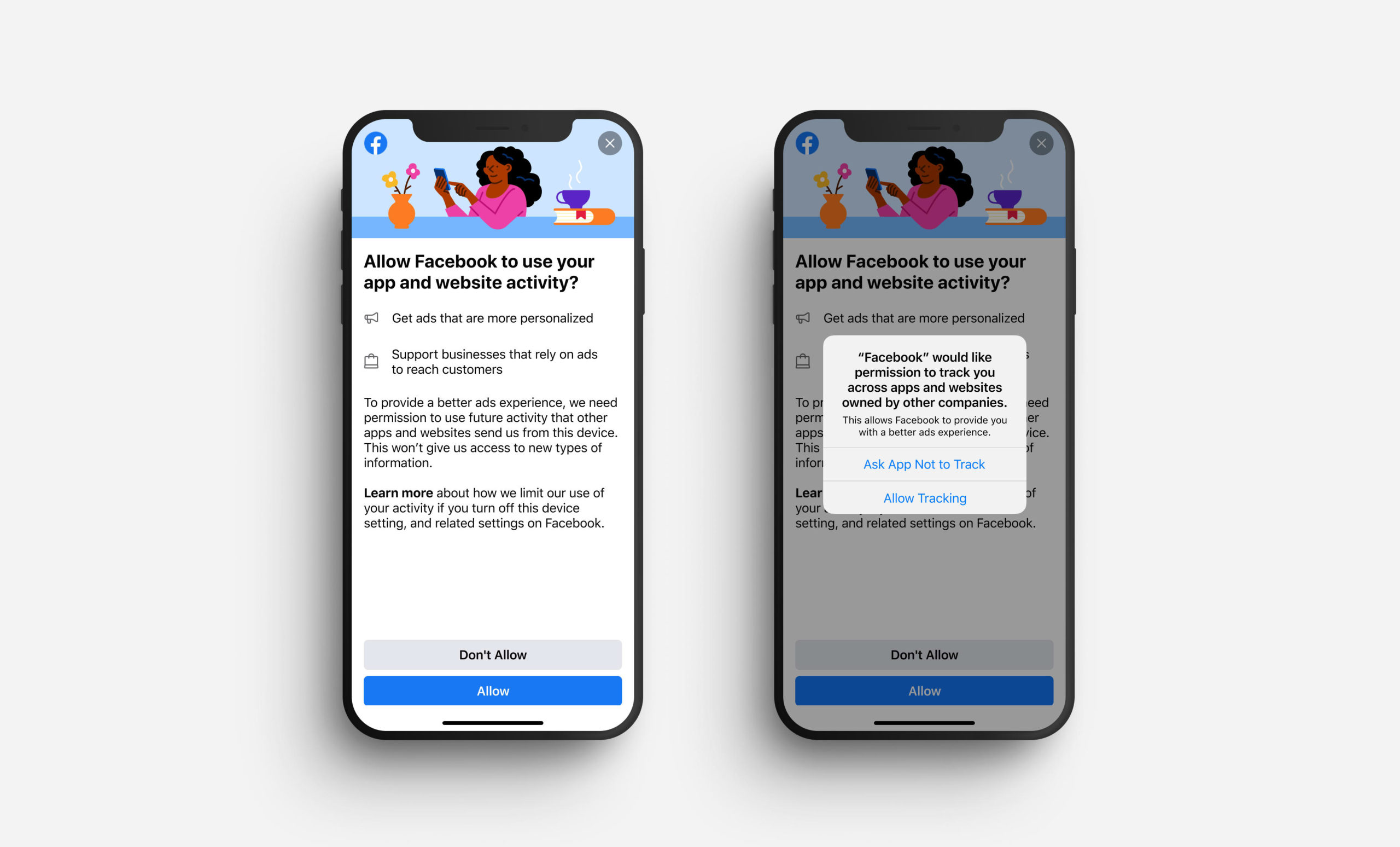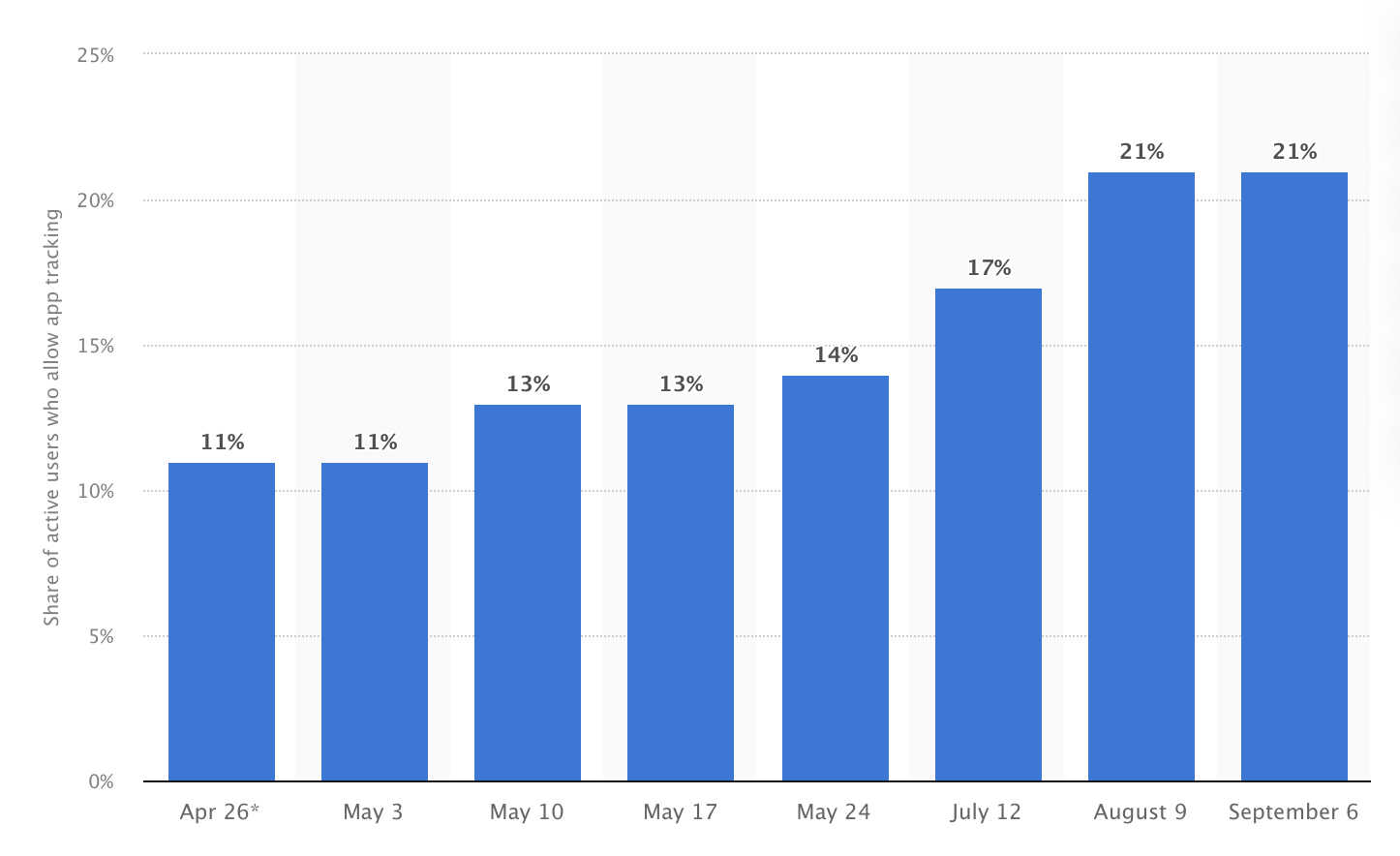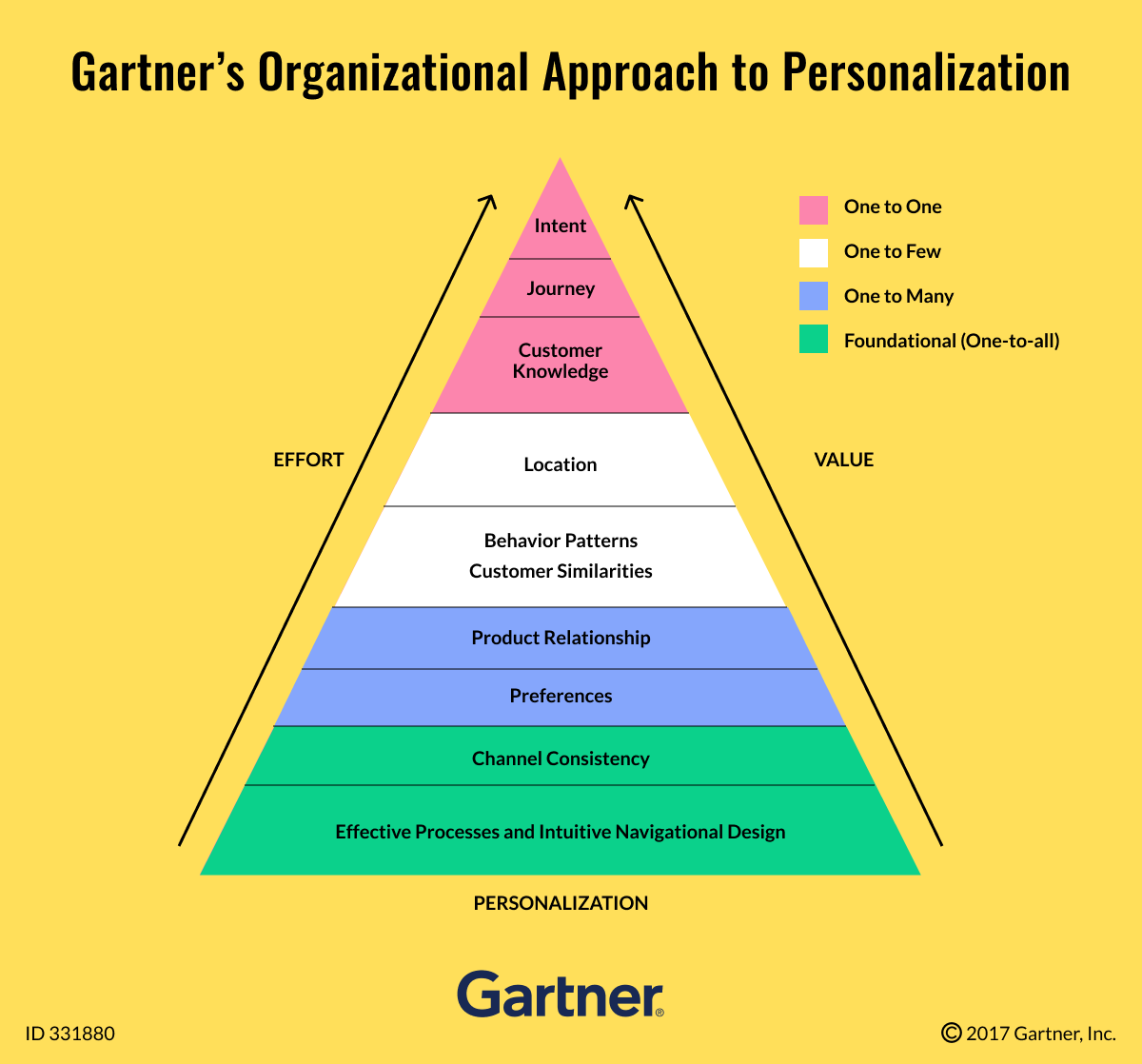The discussion of data privacy and app tracking continues to be a hot button topic in the world of advertising and eCommerce.
With the recent launch of Apple’s new iOS 15 in September 2021 and its privacy features, there’s been even more buzz and concern. So what’s it all about?
iOS 14.5 Crash Course
Before iOS 14, identifying and tracking was the default status through the Identifier for Advertisers or IDFA. Adjust defines IDFA as a “random device identifier assigned by Apple to a user’s device. Advertisers use this to track data so they can deliver customized advertising.”
The precedent for establishing stricter privacy protection for users was set during Apple’s iOS 14.5 launch in April of 2021.
Some of the visual display innovations linked to privacy updates were not controversial. For instance, the update included an indicator light that tells you when apps are using your microphone or camera. An orange dot alerts you that your microphone is in use while a green dot is a signal that your camera is in use. It’s standard for many apps, such as Zoom and WhatsApp, to access the user’s microphone and camera for use. However, if someone is trying to access the mobile user’s camera or mic for malicious purposes, the user will be aware due to these visual cues.

Source: MacRumors
Here’s where things get more complicated.
Disrupting the IDFA’s status quo of tracking without the user’s permission, App Tracking Transparency, or ATT, requires mobile apps to ask permission to both track their users and to collect tracking data. iOS 14.5 mandates that apps must show their users a pop-up, only tracking them if they decide to “opt-in,” or to “allow tracking.”

Source: CNBC
Tracking Explained
So we now know that ATT marks the end of IDFA, but what constitutes tracking?
Here are some examples of tracking that are no longer allowed under ATT without first obtaining user permission first.
- Using data collected from other companies’ apps and websites to display target ads on an app
- Sharing email lists or device location data with a data broker
- Sharing email lists or advertising IDS with third-parties
- Using information to retarget the same user in other apps
- Installing a third-party software development kit in an app which repurposes the data collected from your app to assist with targeted advertising in other apps
Here are some examples that are not considered tracking under ATT and can therefore continue without user permission.
- Linking user or device data from your app to third-party data if the information is only stored on the user’s device and is not distributed off the device in a user identified way.
- Sharing data with data brokers who use the data only for fraud detection, prevention, and security purposes.
- Sharing data to a broker who is a consumer reporting agency for the purpose of either reporting a consumer’s worthiness of credit or for making a credit determination
For more comprehensive information about user privacy and data use, read from Apple themselves.
New iOS 15 Privacy Features
Everyone from eCommerce brands, to digital marketers, to mobile app developers, to small business owners, and of course, Apple users, will be impacted by iOS 14.5 and iOS 15.
Principles of ATT have only strengthened under iOS 15 with the addition of more privacy controls, including Mail Privacy Protection.
Mail Privacy Protection will impact email marketing the most. According to Apple’s press release, this privacy update helps device users prevent email senders from knowing personal details, including when they open the email or their location. With the strengthening of Intelligent Tracking Prevention, Apple protects user data from third parties by masking their IP address so that their activity can’t be tracked across different sites or to build a profile on them.
In addition to MPP, some other privacy features include App Privacy Report, which allows device users to see the metrics of how often each app is using their information, such as their location, photos, camera, and microphone. To address privacy concerns regarding unwanted audio recording for voice assistants, Apple launched on-device speech recognition too. Under iOS 15, Apple also launched iCloud+, a paid subscription service. Their new security features include, Private Relay, Hide My Email, and HomeKit Secure Video. Finally, there are additional features added to “share current location,” “enhanced Photos limited library access,” and “secure paste.”
What Does this Mean for cCommerce Brands?
The power has shifted into the hands of the Apple user. Consumers now have more agency in securing their privacy when using apps. Before ATT, they had the power to “opt out” of tracking. Now, they have the power to “opt in.” While this change may seem inconsequential, in reality, it’s a big deal. The default status quo switched from always tracking unless a user objected to being tracked to a user not being tracked until they consented to being tracked.
The new iOS developments enable the Apple user to transition from a passive consumer to an active participant.
Statista reports the Weekly opt-in rate of mobile users worldwide who are allowing app tracking after iOS 14.5 update from April to September 2021.

Source: Statista, 2021
In the five month time frame between the iOS 14.5 and iOS 15 launch, we can see that the opt- in rate increased by 10%, from 11 to 21%. While this trend is evidence to suggest that people are warming up slowly to the idea of sharing their data with apps, the majority of users (79%) aren’t opting in and therefore, are not being tracked.
There’s a huge opportunity for eCommerce marketers to reach these individuals in this untapped demographic! Marketers may consider the following three solutions to combat the challenge of decreased access to user tracking data.
Top 3 Challenges and Solutions for eCommerce Marketers
ATT and MPP will most impact the eCommerce and advertising industry. Here are the top three challenges and solutions:
1.Reaching the right customers through Facebook ads
As a social networking app, Facebook must be compliant with ATT. Due to overall low opt-in rates, there are fewer Apple users being tracked through Facebook. eCommerce businesses who are dependent on Facebook digital advertising for revenue may struggle to target the right customers with the right personalized ads. Shopify discusses the challenges associated with advertising on social channels such as Facebook.
The solution: Listen to advice straight from the source. Facebook recommends several strategies for those using ads on apps in response to ATT: Verify your website’s domain, configure 8 prioritized web conversion events per domain in Events Manager, and update to Facebook’s SDK for iOS version 8.1.
2. Attributing Conversions
Let’s say that users on your eCommerce site are still converting despite the challenges to Facebook advertising under ATT. That’s great! But at the same time, you don’t know where to attribute these conversions. You aren’t sure of which ads are appealing to specific customer demographic segments.
The solution: Think backwards. Consider implementing post-purchase surveys. Investigate whether or not Facebook ads motivated customers to check out and to complete their online purchase. Reach buyers through surveys in a post-purchase email receipt or in pop-ups on the checkout page.
3. Email Analytics Metrics
MPP restricts email marketers from knowing when customers open their emails. One implication of this is that opens will no longer be a reliable metric for email marketing.
At the WorldWide Developer’s Conference, Garrett Reid from Apple privacy Protection announced,
“Since Mail content may be loaded automatically after delivery, the time of Mail viewing will no longer be correct. And since that content is loaded without revealing people’s IP addresses and without detailed headers, the location and type of device reading the Mail aren’t revealed. And you’ll see your emails as being opened, regardless of if the user read it or not.”
Due to inflation of opens, marketers will struggle to know the exact metrics of subscriber engagement in their email marketing campaigns.
The solution? Embrace more holistic types of email marketing metrics including unsubscriber data and spam complaints. Take a closer look at your subscriber lifetime value. Check out more of Modern Marketing blog’s tips. Or, take a break from email marketing and branch out. Experiment with referral marketing, affiliate marketing, and SEO.
Leveraging the Power of Intent Data
With the rapid rise in iOS privacy updates in a short period of time, it’s important for marketers to find creative ways to understand customer intent for those 79% currently opting out of app tracking.
So how can eCommerce marketers implement personalized marketing strategies in their campaigns in the midst of ATT and MPP?
Namogoo’s Digital Journey Continuity Platform understands what each shopper is looking for. By automatically gathering non-PII data on customer behavior, such as browser type, device type, operating system, region, and internet speed and instantly calculating factors like price sensitivity, likelihood of abandonment, and purchase tendencies, the platform is able to understand customer intent, the highest form of personalization.

According to Gartner’s Organizational Approach to Personalization, intent falls at the top of the pyramid, meaning the one to one approach has the highest value compared to lower personalization forms such as location, product relationship, and channel consistency.
Due to the platform’s machine learning capabilities, however, the effort required for high levels of intent-based personalization is minimized.
Next Steps – Diversification, Creativity, and Adaptability
While these challenges may feel like obstacles to advertising business as usual, there are strategies to adapt to changing privacy regulations. If you’re open minded and embrace this change by responding with diversification and creativity, you’ll be set to tackle these challenges.
In the age of iOS 14.5 App Tracking Transparency and iOS 15 Mail Privacy Protection, eCommerce marketers need to be aware of fast evolving technology updates relating to data privacy, to understand the impact for eCommerce businesses, and to strategize ways to quickly adapt.







